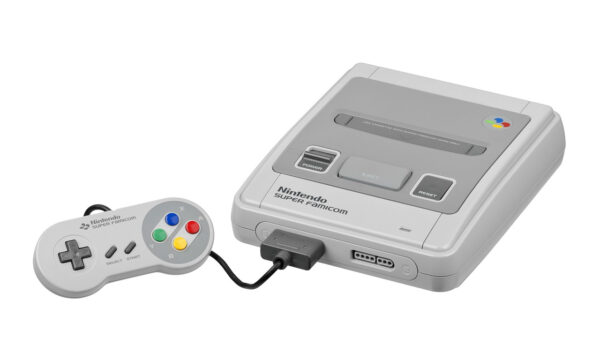Currency strength indicator

The currency strength indicator is a crucial element of successful trading. This guide will reveal to you the peculiarities of using this instrument for securing the best performance.
It could be quite confusing to determine the strength of a currency through the chart. For instance, on a 15-minutes chart, the EUR may occur to be stronger than the dollar; meanwhile, the analysis of this same currency on the four-hour chart will demonstrate the opposite result. These types of discrepancies and mixed signals are a typical situation for the forex market. When you cannot identify a currency’s strength clearly based on forex charts, it’s time to apply a currency strength indicator. Let’s begin our acquaintance with this instrument from the essentials.
The currency strength indicator: What is it?
As this instrument’s very name indicates, the currency strength indicator is intended to identify the strength of a currency pair compared to other peers. It will help you better understand the conflicting market trends. Meanwhile, you need to remember that not all currency strength metrics are equally effective. Some of them are based on the ROC rate change, on the CCI, the ROC, or some other types of intermarket correlations.
Therefore, when choosing which of these instruments to select, one needs to pay particular attention to the formula used for the currency strength calculation since its wrong selection can lead to misleading results. Among the existing currency strength indicators, those that rely on more aspects than the mere change in price over a particular period prove themselves to be more effective than others. Now that you understand the basics let’s discuss the ways to use the currency strength indicator and the strategies of currency strength trading one can resort to.
The ways of using currency strength metre
Two standards schemes of applying the currency strength identification instruments exist:
- as a tool to follow trends
- as a tool to reverse trends
When you use the currency strength meter, you assess the strength of each currency separately instead of currency pairs. You need to determine the strongest and the weakest currencies and subsequently select the proper pair to use in trading. The idea behind the whole process is apparent and straightforward.
You have two alternatives:
- to buy the strongest currency against the weakest one
- to sell the weakest currency against the strongest one
Based on what it shows, one can see that, at the moment of the map’s making, JPY was the strongest currency, with EUR as the weakest counterpart. Therefore, selling EUR/JPY could become a deal with the highest potential. This is a form of trading based on prevailing momentum.
Another way in which forex traders can use the CSI is by waiting until a currency demonstrates an extreme strength, with another one showing a severe weakness. In such a case, one can attempt to trade a reversal. This approach is riskier; however, it can bring more significant benefits to a person willing to take this risk.
The strategies of currency strength trading
To deal with currency trading, you need to have a comprehensive strategy to which you will adjust your actions and decisions. The application of the currency strength indicator can be either your standalone strategy or a confirmation tool in a more comprehensive mechanism.
The selection of a strategy to utilise in currency trading is closely linked to a scope of functions that the currency strength indicator has.
Hence, this tool allows the trader to utilise its three main features:
- Currency Strength Indicator. This element of the tool demonstrates a diagram representing each currency’s strength within a particular time frame.
- Currency Heat Map Indicator. This element demonstrates all relationships and correlations that are possible between currency pairs, arranging and colouring them accordingly.
- Currency Strength Colour Desk. This element provides you with an overall market view. Compared with two other indicators, it interacts with all TFs, demonstrating the synthesised information. With the consideration of these features, three main trading strategies could be realised using the CSI.
Strategy 1. Trading with the currency strength indicator
The CSI represents the strength of particular currencies through a diagram, on which histogram bars of different colours are posted below and above the zero line.
Each colour depicted on it represents a particular currency. As can be seen from the chart, at the moment, it could be beneficial to purchase the GBP/AUD currency pair.
Based on it, one may see that the NZD currently has the status of the strongest currency, while EUR is the weakest one. However, the NZD’s strength and the weakness of EUR were reported neither at the same time nor within the first three bars. Therefore, pairing them may turn out to be risky. This situation demonstrates an essential rule: when working with the currency strength indicator, you need to know how to read it correctly.
Strategy 2. Trading with the currency heat map
The currency heat map can be used for the scalping of short-term momentum bursts. It demonstrates the fluctuations in the currencies’ short-term strengths and weaknesses. To see how a currency heat map can be utilised. According to what we see, NZD is currently the strongest currency, with CHF being the weakest one. Consequently, NZD/CHF turns out to be the currency pair with the most significant potential.
As we can see, the strongest currency kept on strengthening, while the weakest one continued weakening. Therefore, it is essential to catch a moment for entering the deal before the situation changes. NSBroker provides access to over 40 CFDs on global currency pairs.
Strategy 3. Trading with the currency strength matrix
The currency strength matrix takes into consideration the intercurrency correlation and price action. It provides a more detailed view of the currency’s strength on the scale of several time frames. Besides, this indicator also demonstrates the average strength of a currency throughout all time frames, making it possible for a trader to assess it on a larger scale.
As we can see from it, the CHF appears to be the strongest currency at the moment. Meanwhile, when looking at it from other time frames’ perspective, one may see a different story. In this way, the use of the currency strength matrix may protect a person from making prudent decisions based on current indicators without considering the dynamics of the currency during previous periods.
Final words
Traders, both professionals and beginners, may find using the currency strength indicator highly beneficial. It can provide them with an opportunity to enter currency-related operations quickly and efficiently. However, one should remember that using this tool is associated with calculating the steps and reading the indicators carefully. If you’re ready, don’t hesitate to start using the currency strength indicator. We are sure you’ll find it very helpful from the first minutes of dealing with this tool.
The editorial unit























Facebook
Twitter
Instagram
YouTube
RSS